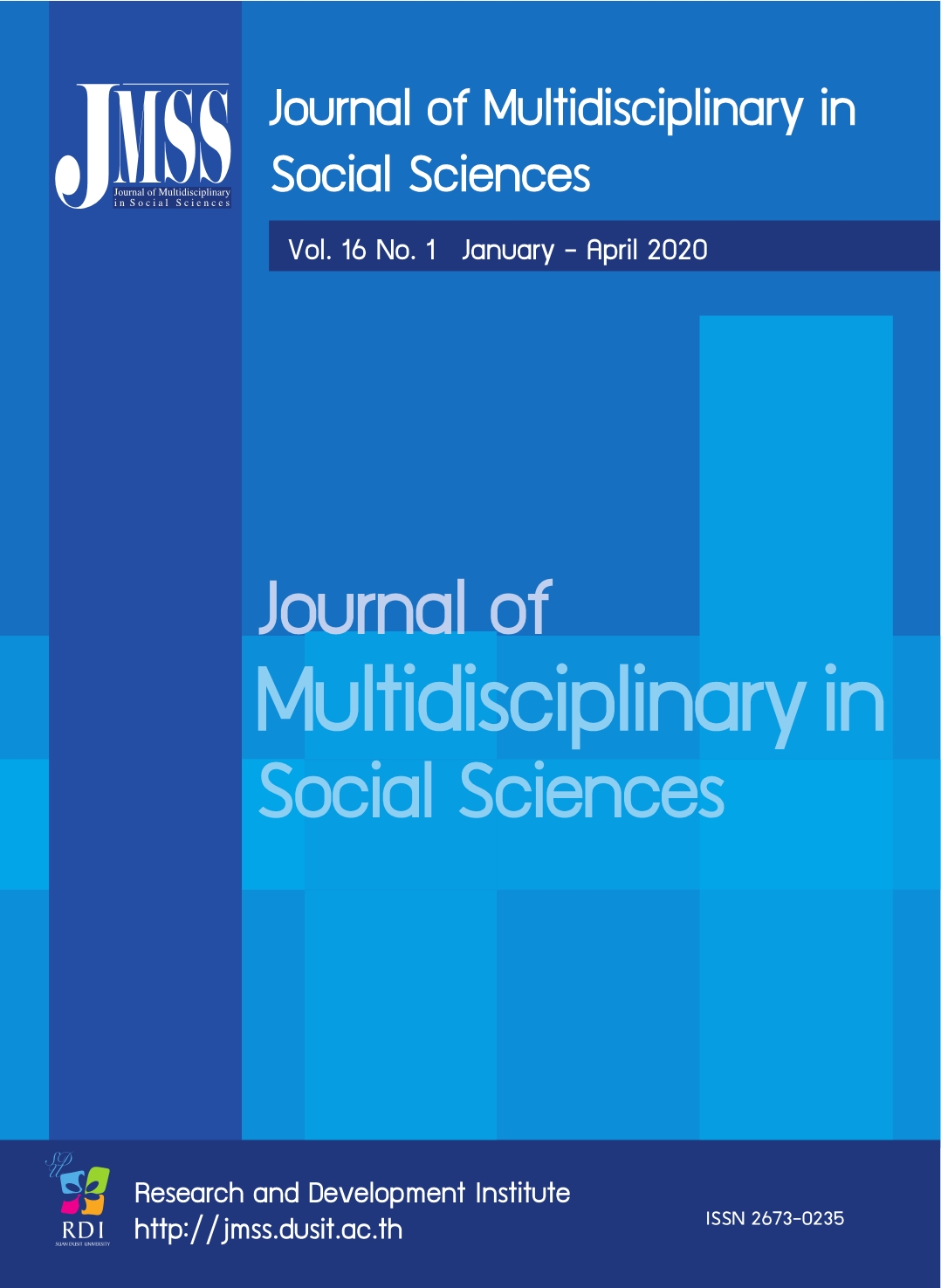Forecasting the Election Results by Applying Pavia's Method
Keywords:
Forecast, Election, Opinion survey, PollAbstract
This research aims to forecast the election results by applying Pavia’s method. In this paper, the information of opinion toward general election, which is reflected as one of behavioural science is applied, including using applied statistics to forecast the election results before announcing the election results. The process of data collection about people opinion was proceeded by survey related to election issues. In this survey, the sample was 3,600 electorates in the general election on 24th March 2019 from 30 electoral zones in Bangkok and the questionnaire about opinion of the general election was used as the tool for data collection. The applied statistics methods in this survey are percentage, Pavia’s method analysis (Mean Absolute Percent Error: MAPE). The poll revealed that five parties received major scores, 22.69% for Pheu Thai, 21.94% for Democrat, 20.39% for Palang Pracharath and 16.69% for Future Forward Party. In terms of analysis by using Pavia’s Method, the poll showed different results, 23.96% for Palang Pracharath, 22.45% for Future Forward Party, 21.25% for Pheu Thai Party and 19.12% for Democrat Party. When the poll results by using Pavia’s method was compared with actual election, the percent of accuracy indicated at 82.28% or 17.12% of error.
References
Armstrong, J. S. (2006). Findings from evidence-based forecasting: Methods for reducing forecast error. International Journal of Forecasting, 22(3), 583-598.
Hibbs, D. A. (2000). Bread and Peace Voting in US Presidential Elections. Public Choice, 104(1), 149-180
Fair, R. C. (1978). The Effect of Economic Events on Votes for President. The review of Economics and Statistics, 60(2), 159-173.
Holbrook, T. M., & DeSart, J. A. (1999). Using state polls to forecast presidential election outcomes in the American states. International Journal of Forecasting, 15(2), 137-142.
Pavia, J. M. (2005). Forecasts from nonrandom samples: The election night case. Journal of the American Statistical Association, 100(472), 1113-1122.
Pavia, J. M. (2010). Improving predictive accuracy of exit polls. International Journal of Forecasting, 26(1), 68-81.
Jones Jr, R. J. (2008). The state of presidential election forecasting: The 2004 experience. International Journal of Forecasting, 24(2), 310-321.
Trangucci, R., Ali, I., Gelman, A., & Rivers, D. (2018). Voting patterns in 2016: Exploration using multilevel regression and poststratification (MRP) on pre-election polls. Retrieved November 8, 2019, from https://arxiv.org/pdf/1802.00842.pd
Wapor Exit Poll Committee. (2006). WAPOR Guidelines for Exit Polls and Election Forecasts. Retrieved November 8, 2019, from https://wapor.org/wp-content/uploads/WAPOR-Guidelines-for-Exit-Polls-and-ElectionForecasts.pdf
Downloads
Published
How to Cite
Issue
Section
License

This work is licensed under a Creative Commons Attribution-NonCommercial-NoDerivatives 4.0 International License.








